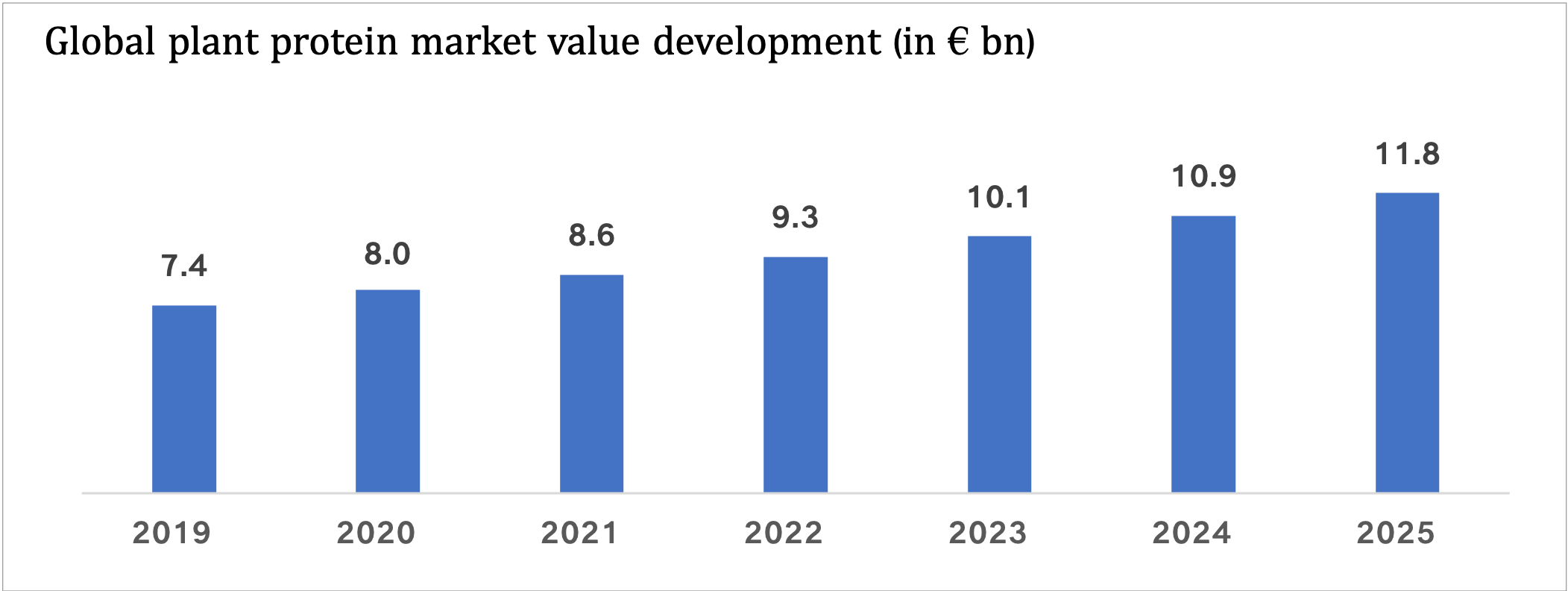Plant-Based Protein Industry Overview
Protein products that are made solely from plant sources, devoid of any animal derivatives, are known as plant-based protein products
Plant-based protein market drivers is the rising consumer preference for a healthy and nutritious diet. The increasing focus of individuals on environmental sustainability and the elevating ethical considerations are also acting as growth-inducing factors
The global plant protein market is expected to grow at a CAGR of 8.1% from €7.4 billion in 2019A to €11.8 billion in 2025E. Main drivers are well-developed regions, such as North America, Europe and Asia-Pacific
Request Report Overview
You may contact us on [email protected] to purchase the report
Market Overview
The global plant protein market is expected to grow at a CAGR of 8.1% from €7.4 billion in 2019A to €11.8 billion in 2025E. Main drivers are well-developed regions, such as North America, Europe and Asia-Pacific. Many large corporations are investing in plant-based food alternatives. In 2019, Unilever opened The Hive – a €85 million plant-based food innovation center in the Netherlands.Allergies and intolerances caused by animal proteins have increased among both humans and pets, causing a further rise in the demand for plant proteins

Market drivers
- Increasing rates of obesity and diabetes see consumption behaviour move towards healthier lifestyles
- Significant consumer shift to vegan diets and products with a high protein content
- Growing demand for plant-based and clean sports nutrition products for muscle recovery
- Plant proteins provide nutrients comparable to animal proteins with less fat and cholesterol
- Plant proteins offer an effective way to reduce the exploitation of both animals and the environment
- Increased number of investments leads to a broader range and improved products
- Rising awareness of beneficial health aspects such as managing weight loss, anti-aging and lower blood pressure
Factors influencing market activity
- Prices will decrease because of optimized supply chains, scaling effects and reduced R&D costs. Beyond Meat, for example, has committed to sell at least one product by 2024 that is at the same price level — or cheaper — than animal meat
- The market is currently characterized by a wealth of innovation, which results in constant expansion in the market size, availability and range of plant protein products. Large sums of money are being invested in R&D, and more and more start-ups are entering the market with innovative solutions
Market Trends
- Significant growth potential for high-protein products and sport nutrients
- Taste and texture are key drivers behind purchase decisions
- Consumer behaviour moving toward vegan and flexitarian lifestyles
- Introduction to Plant-based Protein
- Market Overview
- Consumption of alternative protein by source
- Market segmentation
- Market Trends and Dynamics
- Plant-Based Protein Pricing
- Environmental and social impact
- Company Profiles
- Comparable Company analysis in Plant-Based Protein Market
- Cargill
- Archer-Daniels-Midland
- International Flavors & Fragrances Inc.
- Kerry Group plc
- Roquette Frères S.A.